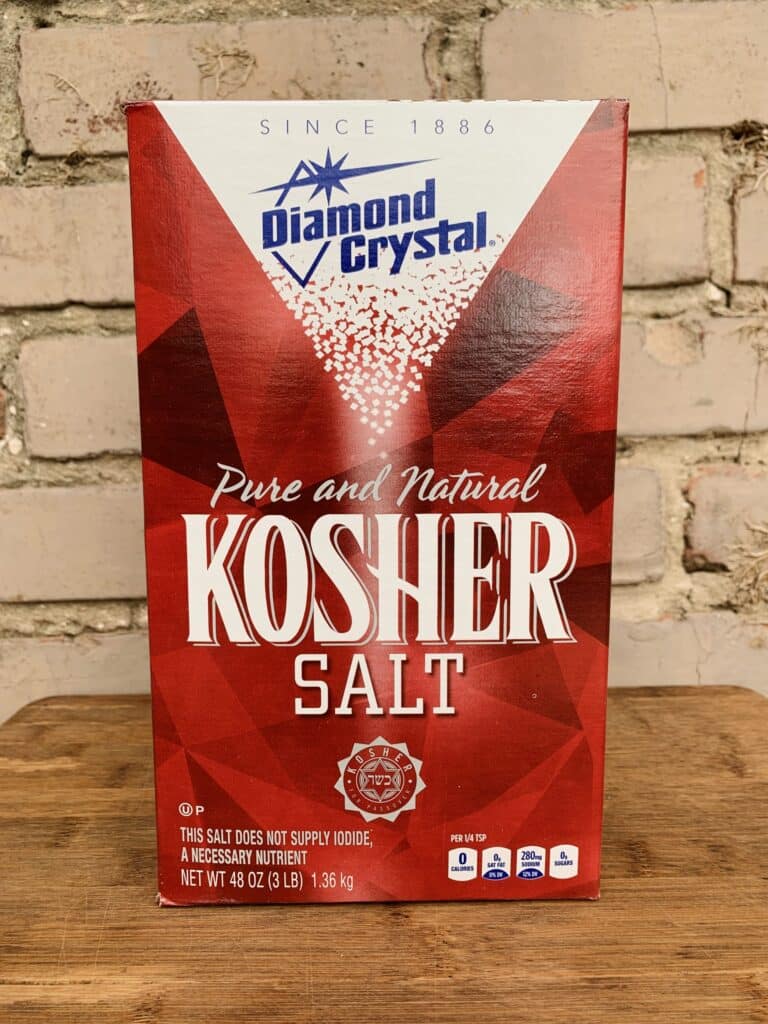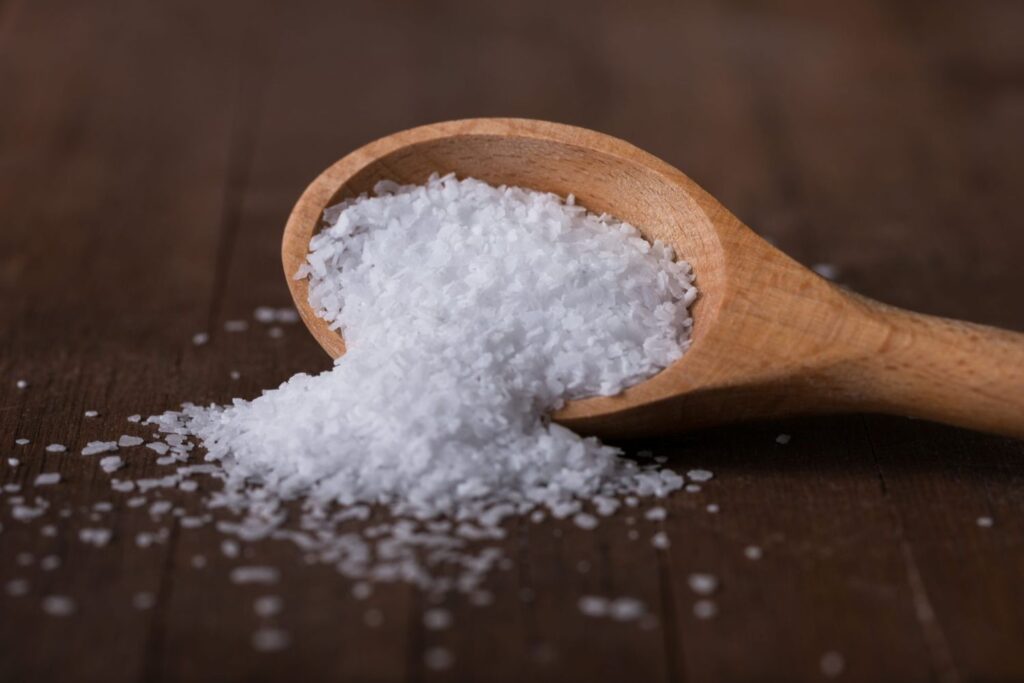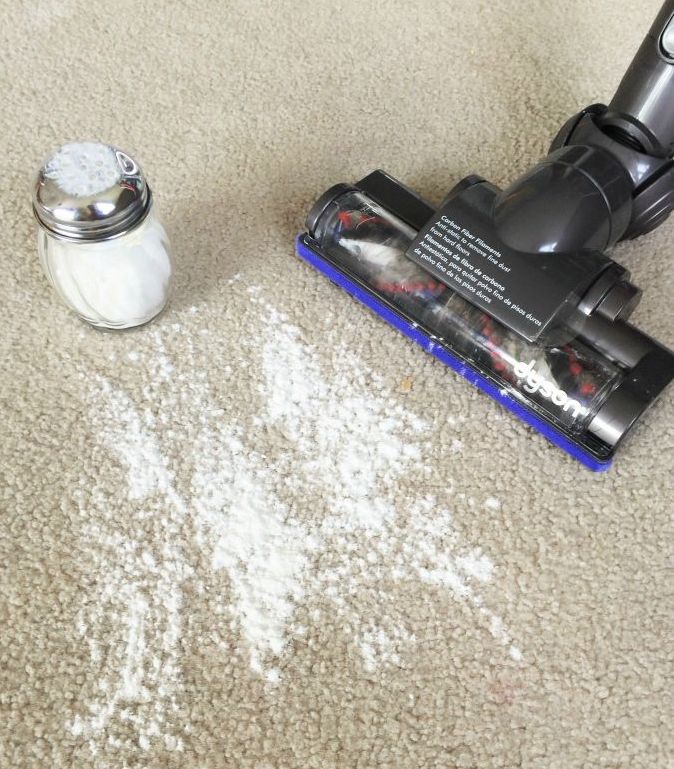Apart from their resilience, fleas are hard to eliminate because they can live and hide in different parts of your house, from pets to bedding. Vacuuming is an integral part of getting rid of fleas in your carpets, but does putting salt in your carpet kill fleas?
Salt is an age-old remedy against fleas that has gained popularity among people battling a flea infestation. This simple remedy is appealing, especially considering it is readily available and affordable. However, these advantages are meaningless if salt fails to kill fleas on your carpet.
In that case, let’s explore its effectiveness against fleas.
Does Putting Salt In Your Carpet Kill Fleas?
Yes, putting salt in your carpet kills fleas. However, while salt can indeed help reduce flea populations in your home, it is not always a foolproof method. Its effectiveness may be limited based on different factors. These are:
Flea Species: Different species of fleas may have varying levels of resistance to desiccation. Some may be more susceptible to salt than others.
Environmental Conditions: Your home’s humidity leaves can influence the success of salt treatment. In very humid environments, salt may be less effective at dehydrating fleas.
Flea Life Stage: Salt is most effective against adult fleas and larvae. It may have limited effectiveness against flea eggs or pupae because their cocoons protect them.
Flea Infestation Severity: Salt helps deal with minor infestations but is less effective against severe ones. In these cases, consider hiring professional assistance or using alternative flea control methods, such as insecticides or flea prevention products for pets.
Related Posts:
- Does Putting Clothes In Plastic Bags Kill Fleas
- Will Just Water And Dish Soap Kill Fleas On A Carpet?
- Does Baking Soda Kill Fleas?
How Does Salt Kill Fleas In Carpets?
Below is how salt kills fleas.
1. Through Dehydration
Since salt is a desiccant, it can absorb moisture. This property acts against the power of a flea’s waxy exoskeleton to retain water and prevent dehydration.
When salt touches a flea’s body, it absorbs the body’s moisture, causing dehydration. This can be lethal to the fleas because moisture is necessary for these parasites’ survival.
2. Disruption of Egg Development
Salt can also disrupt the development of flea eggs. Fleas often lay their eggs in places pets usually spend a lot of their time, such as carpets and bedding. Sprinkling salt in these areas can render the environment less conducive for flea eggs.
The salt crystals can pierce the eggs’ outer shells, leading to their desiccation and preventing them from hatching into larvae.
3. Mechanical Action
When you apply salt to carpets or other surfaces, it can have a mechanical action as well. As people or pets walk on the salt, it can grind into the bodies of fleas and their larvae, causing physical damage and potentially killing them.
Related Posts: Household Products That Kill Fleas
Pros of Using Salt for Flea Control
1. Natural and Non-Toxic
Salt is a safe and non-toxic method of flea control that does not pose health risks to humans or pets, provided you use it correctly.
2. Cost-Effective
You do not have to spend a lot of time or money searching for salt as it is readily available and inexpensive. In fact, you likely have salt at home right now. Therefore, it is an affordable remedy against fleas.
3. Easy Application
You do not need special equipment or expertise to apply salt to your carpet.
4. Environmentally Friendly
Salt doesn’t contribute to chemical pollution or harm non-target organisms, making it a more sustainable choice.
5. Non-Residual
Unlike chemical insecticides, salt doesn’t leave behind residual toxins that can linger in your home or affect indoor air quality. Once you’ve completed the treatment and vacuumed the salt, there are no lingering effects.
Cons of Using Salt for Flea Control
1. Limited Effectiveness
Salt may not completely eliminate a severe flea infestation or address all life stages of fleas.
2. Time-Consuming
Applying salt, waiting, and then vacuuming will consume a considerable amount of your time. The method gets much more time-consuming, especially if you will need reapplication.
3. Not Suitable for All Environments
Salt is less effective at dehydrating fleas in highly humid environments.
4. Uncertainty of Results
The effectiveness of salt can vary, and there is no guarantee that it will work in all cases.
How To Use Salt To Kill Fleas In Carpet
Now that we know how salt kills fleas in carpets, the factors affecting this method, and its pros and cons, let’s tackle the steps for using this remedy.
Materials
- Table salt (kosher or sea salt)
- A vacuum cleaner
- A broom or brush (optional)
- Borax (optional, for added effectiveness)
Steps
1. Prepare the Area
Remove all objects, furniture, and clutter from the carpeted area, including toys, pet beds, and anything else that might obstruct your access to the carpet. Also, keep your pets out of the room or confine them to a different space during the flea treatment.
In addition, move your pet food and water to a different spot or seal them in airtight containers to prevent contamination with salt.
2. Vacuum Your Carpet Thoroughly
Before applying the salt, thoroughly vacuum your carpet to remove any adult fleas, flea eggs, and flea larvae from the carpet’s surface. Spend extra time on areas with heavy flea activity, such as around pet bedding or favorite resting spots.
If possible, use a vacuum cleaner with strong suction and a beater brush or agitator since it is more effective at dislodging fleas, eggs, and larvae from the carpet fibers.
Furthermore, give your vacuum the best chance of dislodging the fleas by making sure your vacuum cleaner’s bag or dustbin is empty and the filter is clean. This will ensure the vacuum operates at its maximum efficiency.
3. Choose the Right Salt
Although most types of salt are effective against fleas, finer-grained salts like kosher salt or sea salt are often preferred because they can penetrate the carpet more effectively. Regular table salt is readily available, effective, and relatively inexpensive, but it has larger granules, which might make it less effective at penetrating the carpet fibers.
Technically, Epsom is not salt, but it can still help dehydrate fleas. However, it has larger granules, so crush it into finer particles if you choose to use it. Choosing the salt type to use is up to you.
4. Apply Salt
Sprinkle salt generously and evenly across your carpet. While you don’t need to create a thick layer, making sure you spread the soil evenly is crucial, as that will ensure the salts come into contact with the fleas. You must also ensure the salt covers every spot the fleas might be hiding.
Furthermore, avoid over-applying salt, as excessive amounts may lead to a crunchy texture on the carpet surface once the salt dries. Moreover, consider lightly working the salt into your carpet fibers using a broom or brush.
This will help the salt reach deeper into the carpet and come into contact with more fleas and eggs. However, do this gently to avoid damaging your carpet.
5. Leave the Salt
The salt will need time to act, so let it sit on your carpet for at least 12 to 48 hours. Keep in mind keeping salt on your carpet longer increases its effectiveness in killing fleas. During this time, keep pets and people away from the treated area to prevent disturbing the salt and fleas.
In addition, keep the treated area dry because moisture can cause the salt to dissolve, reducing its effectiveness. In that case, avoid spills, and if you need to walk on the treated carpet, make sure your feet are dry.
6. Vacuum Again
After the waiting period, vacuum your carpet thoroughly once more with a vacuum with strong suction and, ideally, a HEPA filter to capture the fleas and salt particles. Vacuuming helps remove the salt, dead fleas, and any remaining flea debris from your carpet.
Pay extra attention to crevices, corners, and baseboards because fleas and debris tend to accumulate in these spots.
7. Dispose of Vacuum Bag or Contents
Transfer the vacuum bag or its contents into a sealed bag, then discard it outside your house to prevent potential re-infestation. Do not skip this step because fleas and their eggs can survive in your vacuum cleaner and will be re-introduced to your home during your next vacuuming session.
8. Repeat if Necessary
For severe infestation, you may have to repeat the salt treatment several times over a few weeks to ensure you eliminate all the flea life cycle stages.
How Long To Leave Salt On Carpet To Kill Fleas?
Ideally, you should leave salt sitting on your carpet for a period of 12 to 48 hours after application. This method doesn’t offer an instant solution against fleas because the salt must touch the flea’s body and dehydrate it or disrupt its life cycle.
Final Remarks
While your flea control arsenal could benefit from adding salt, this substance has limitations. Beware that its effectiveness often varies depending on the flea species, environmental conditions, and the severity of the infestation.
Although salt can kill minor flea infestation in your carpet, it is best to adopt comprehensive flea elimination strategies. Also, combining other flea control techniques with salt treatment boosts its effectiveness.

I’m Mike Hyle, an exterminator with 7+ years of experience handling all sorts of pests, including mice, cockroaches, bed bugs, and termites. I also write for Pest Solutions DIY blog to share my knowledge and help homeowners keep their homes pest-free. Outside work, I enjoy hunting, snowshoeing, and exploring nature. Check out my blog for helpful pest control tips!



